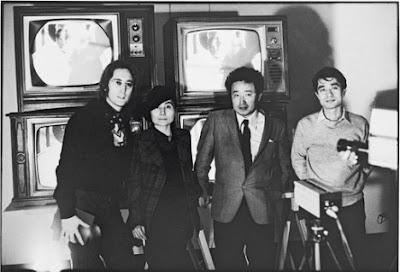Combining technology with art making processes Paik prophesied about the role of the artist and the world itself in the future, portrayed in his seminal 1963 works Participation TV and Random Access Information. Celebrating 50 years since Paik's first solo show, Exposition of Music - Electronic Televsion at Wuppertal in 1963, Transmitted Live: Nam June Paik Resounds documents the ideas of counter-culture movements of the 60's and Paik's belief that technology should be treated as a material within an artist's repertoire, televisions, lasers, video and satellites feature heavily within his work.
 |
| TV Cello - Nam June Piak |
 |
| Global Groove - Nam June Piak |

0 comments:
Post a Comment